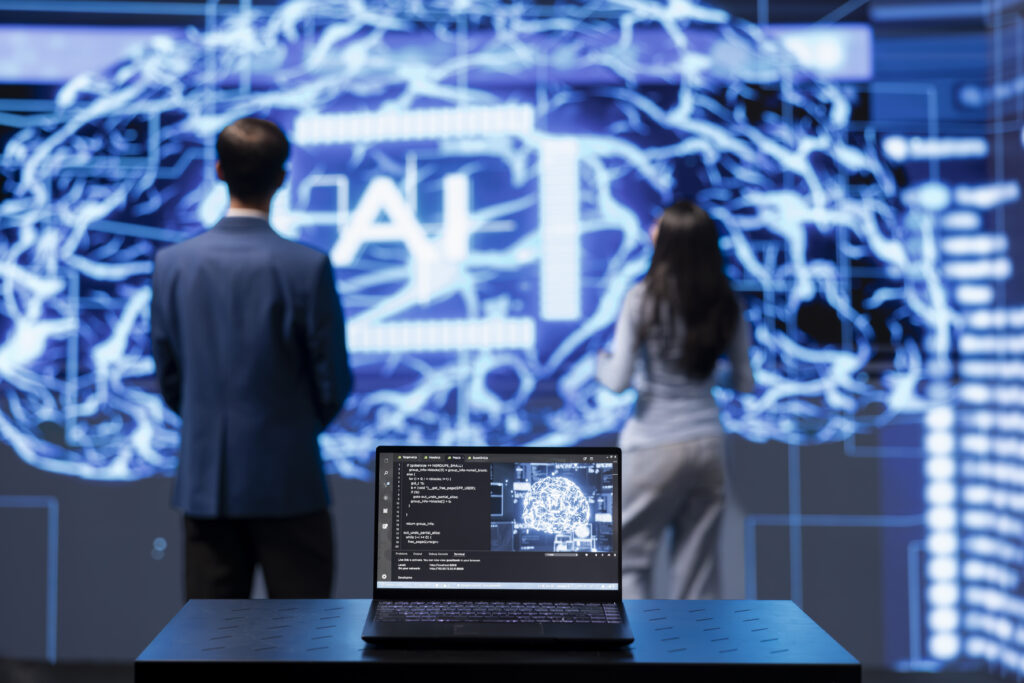Deepfake Technology: What It Is, How It Works, and Its Impact on Society
Introduction
Deepfake technology has rapidly evolved, becoming a significant topic of discussion in the digital world. Initially developed as an AI-driven tool for image and video manipulation, deepfakes have gained attention for their potential to deceive and mislead. While some applications showcase creativity and innovation, others pose serious ethical and security risks. This article delves into the nature of deepfakes, their various uses, and the broader implications for society.
What Are Deepfakes?
Deepfake technology leverages artificial intelligence (AI), specifically deep learning algorithms, to create highly realistic manipulated images, videos, and audio recordings. The term “deepfake” originates from “deep learning” and “fake,” highlighting the use of neural networks to generate synthetic media.
At the core of deepfake technology are Generative Adversarial Networks (GANs). GANs consist of two competing neural networks:
A generator, which creates fake content.
A discriminator, which evaluates the authenticity of the content.
Through continuous iterations, these networks refine their outputs until the generated content is nearly indistinguishable from real media.
How Deepfakes Manifest
Deepfake technology manifests in various forms, including:
1. Video Manipulation
Deepfake videos superimpose one person’s face onto another’s body, making it appear as though they said or did something they never actually did.
Example: In 2018, a deepfake video of Barack Obama was created by researchers at the University of Washington, making it look like he was saying words he never spoke.
Example: Fake Tom Cruise videos appeared on TikTok in 2021, fooling millions of users due to their remarkable realism.
2. Audio Deepfakes
AI-generated voice synthesis can clone a person’s voice, creating fake speech recordings.
Example: In 2019, criminals used AI-generated voice deepfakes to impersonate a CEO, tricking a UK-based company into wiring $243,000 to fraudsters.
Example: OpenAI’s voice cloning technology can generate synthetic voices that sound nearly identical to the original speaker.
3. Deepfake Images
Deepfake image manipulation can create entirely fictional people or modify existing photos.
Example: “This Person Does Not Exist,” a website that generates realistic AI-created faces, has demonstrated how convincingly GANs can fabricate human-like images.
Example: Fake profile pictures on social media platforms have been used for scams, catfishing, and propaganda campaigns.
4. AI-Generated Text and Documents
AI deepfake technology is also capable of producing fraudulent text-based content, including fake news articles, doctored transcripts, and synthetic documents.
Example: AI-generated misinformation has been used in political campaigns to spread false narratives about candidates.
Example: Companies have detected fraudulent resumes and recommendation letters generated by AI.
Positive Uses of Deepfake Technology
While deepfakes are often associated with deception, they also have beneficial applications:
1. Entertainment and Film Industry
Deepfake technology is revolutionizing digital effects in movies and television.
Example: Lucasfilm used deepfake technology to de-age Mark Hamill in “The Mandalorian,” bringing back a younger version of Luke Skywalker.
Example: The movie “Rogue One: A Star Wars Story” used deepfake-like CGI techniques to recreate the likeness of Peter Cushing as Grand Moff Tarkin.
2. Accessibility and Communication
Deepfake AI can help individuals with disabilities by creating realistic voice synthesis for those who have lost their ability to speak.
Example: AI voice synthesis has allowed the late Stephen Hawking’s voice to be preserved and used in digital communication.
Example: Deepfake technology can translate a speaker’s voice and lip movements in real-time for multilingual communication.
3. Education and Historical Preservation
Deepfake-based AI can recreate historical figures and allow for interactive educational experiences.
Example: The Dalí Museum in Florida used AI deepfake technology to bring Salvador Dalí “back to life” for museum visitors.
Example: AI-generated avatars of historical figures can provide immersive learning experiences in virtual reality classrooms.
The Dangers of Deepfake Technology
Despite its benefits, deepfake technology presents several risks:
1. Misinformation and Fake News
Deepfake videos and audio recordings can be used to create false narratives that manipulate public opinion and elections.
Example: Political deepfakes have already surfaced, with fake videos of world leaders making statements they never actually made.
2. Identity Theft and Fraud
Deepfake technology enables cybercriminals to impersonate individuals, leading to identity theft and financial fraud.
Example: Deepfake scams have been used to mimic voices and faces in real-time, tricking individuals and businesses into transferring money.
3. Privacy Violations and Ethical Concerns
Unauthorized deepfake content, including non-consensual adult material, is a growing issue.
Example: A significant portion of deepfake videos involve the manipulation of women’s faces into explicit content without consent.
Regulations and Countermeasures Against Deepfakes
Governments and technology companies are implementing strategies to detect and combat deepfake abuse:
AI Detection Tools: Companies like Microsoft, Facebook, and Google are developing deepfake detection tools.
Legal Measures: Some countries, such as the U.S. and China, have introduced laws making deepfake creation for malicious purposes illegal.
Blockchain Verification: Digital watermarking and blockchain-based verification systems can authenticate legitimate media content.
Conclusion: Are Deepfakes Good or Bad?
Deepfake technology is a double-edged sword. On one hand, it has the potential to revolutionize entertainment, education, and accessibility. On the other, it presents significant ethical challenges, including misinformation, fraud, and privacy violations.
The key to managing deepfake technology lies in responsible use, stringent regulations, and continuous advancements in detection methods. As AI continues to evolve, society must balance innovation with security to ensure that deepfake technology serves as a tool for creativity rather than deception.


